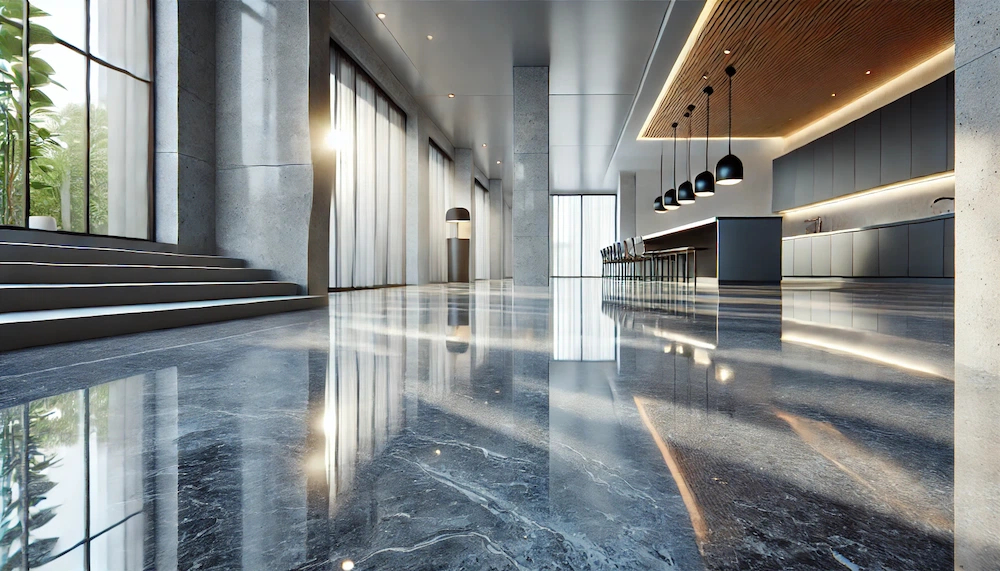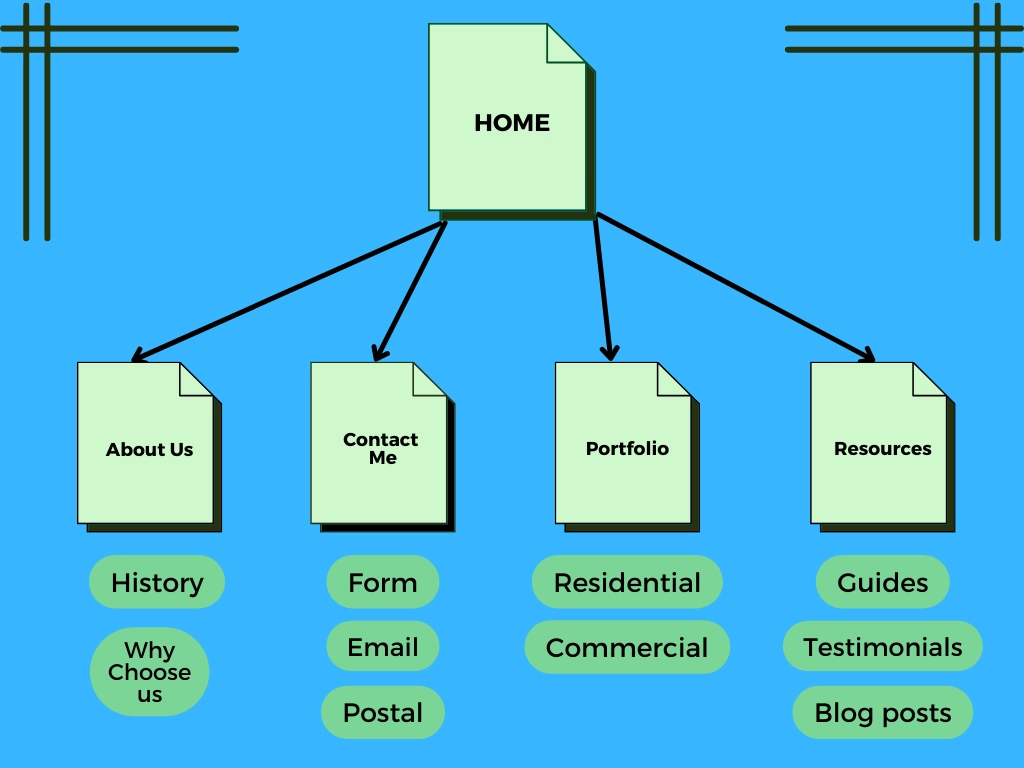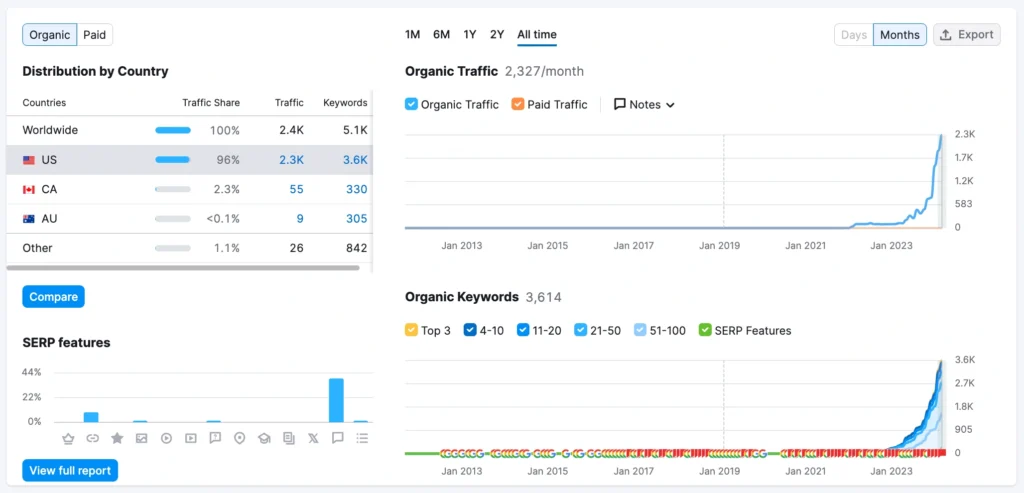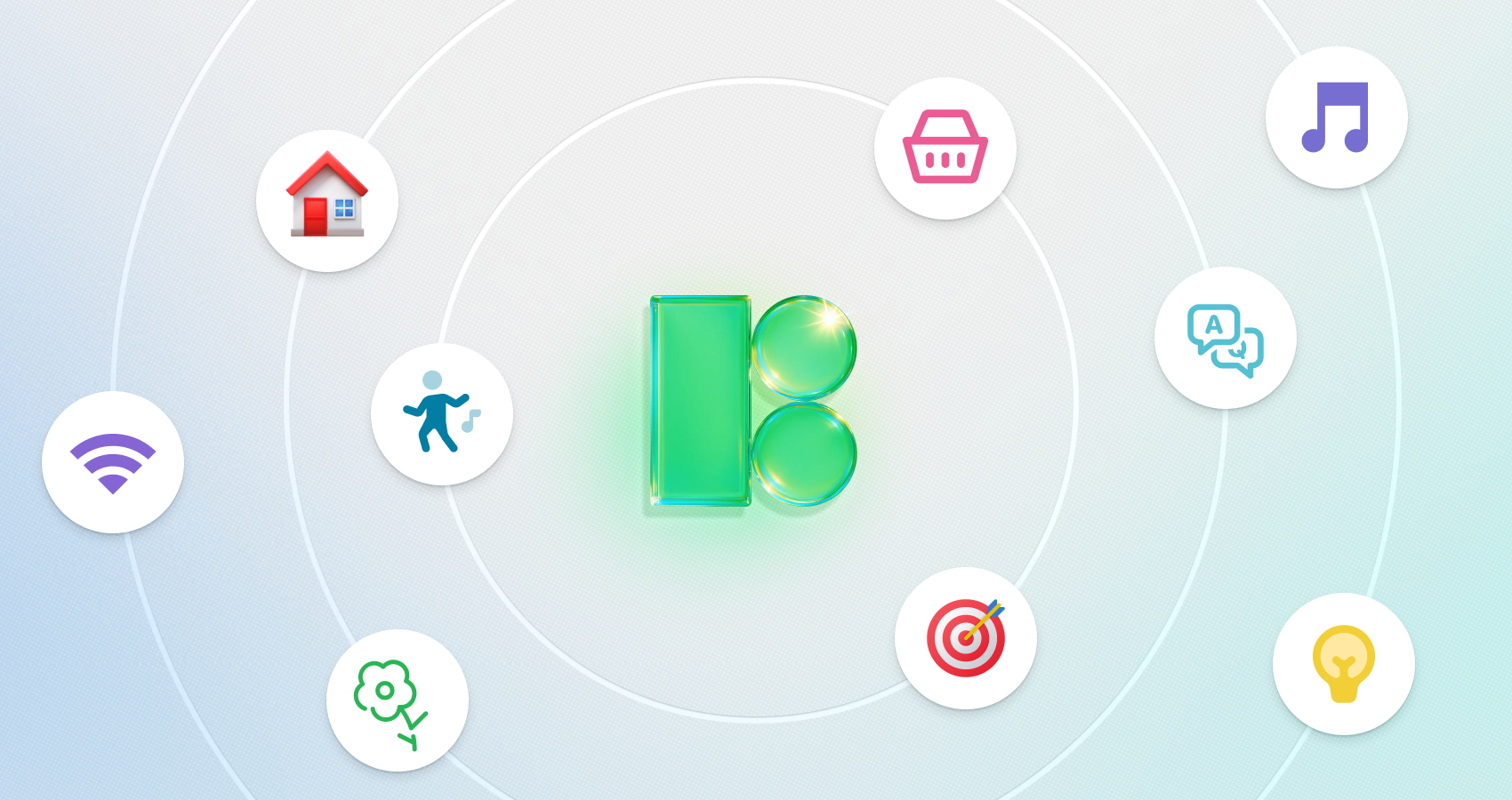
A professional website design for epoxy flooring companies is critical to attract new clients, showcase their work, and build credibility. In 2024, the digital landscape continues to evolve, making it essential to have a website that not only looks great but also performs well in search engines and provides an excellent user experience.
Key Elements for Website in 2024
#1 — Responsive Design
In 2024, having a responsive design is non-negotiable. Your website must look and function perfectly on all devices, including desktops, tablets, and smartphones. Responsive design enhances user experience and is a significant factor in search engine ranking.
Key Features:
- Fluid grid layouts that adapt to different screen sizes
- Flexible images and media that resize accordingly
- Responsive navigation menus that work well on touch screens
- Testing on multiple devices to ensure compatibility
#2 — User Experience (UX) Design
A website that provides an excellent user experience will keep visitors engaged and encourage them to explore your services. UX design focuses on the ease of navigation, accessibility, and overall satisfaction of the user.
Key Features:
- Intuitive and easy-to-use navigation
- Clear and concise calls-to-action (CTAs)
- Fast loading times
- Minimalistic design with ample white space
- Accessible to users with disabilities, including screen reader compatibility and keyboard navigation
#3 — SEO Optimization
Search engine optimization (SEO) is critical for driving organic traffic to your website. In 2024, SEO strategies must evolve to include more than just keyword placement.
Key Features:
- Comprehensive keyword research tailored to your niche
- On-page SEO elements like meta titles, descriptions, headers, and alt texts
- High-quality, original content that provides value to users
- Local SEO optimization to attract customers in your area
- Structured data and schema markup to help search engines understand your content better
#4 — High-Quality Content
Content is still king in 2024. Your website should feature engaging, informative, and relevant content that resonates with your target audience. This includes text, images, and videos.
Key Features:
- Compelling homepage copy that captures your brand’s essence
- Detailed service pages explaining what you offer
- A blog with regular updates on industry trends, tips, and company news
- High-resolution images and videos of your work
- Customer testimonials and case studies
#5 — Performance and Speed
Website performance, particularly speed, is crucial for both user experience and SEO. A slow website can lead to high bounce rates and poor search engine rankings.
Key Features:
- Optimized images and media files for faster loading
- Efficient code and minimal use of heavy scripts
- Use of Content Delivery Networks (CDNs) to reduce server load times
- Regular performance testing and optimization
#6 — Security
Security is paramount in 2024. Users need to trust that their data is safe when interacting with your website, especially if you handle transactions or collect personal information.
Key Features:
- SSL certificates to ensure secure connections (HTTPS)
- Regular software updates and security patches
- Secure hosting solutions with robust protection against cyber threats
- Clear privacy policies and terms of service
#7 — Integration with Modern Tools
Modern websites should integrate seamlessly with various tools and platforms to enhance functionality and user experience.
Key Features:
- Online booking and scheduling systems
- Live chat and chatbot integration for immediate customer support
- Social media feeds and sharing options
- Email marketing integration for capturing leads and nurturing relationships
- Analytics tools for tracking website performance and user behavior
#8 — Visual Appeal
An aesthetically pleasing website can attract and retain visitors. Visual appeal is achieved through professional design, consistent branding, and high-quality media.
Key Features:
- Consistent use of brand colors, fonts, and styles
- Professional, high-resolution images and videos
- Clean and modern design that aligns with current trends
- Use of visual storytelling to convey your brand’s message
#9 — Accessibility
Making your website accessible to all users, including those with disabilities, is not only a legal requirement in many regions but also expands your potential audience.
Key Features:
- Text alternatives for non-text content (alt text for images)
- Captioning and transcripts for multimedia content
- Clear and logical navigation
- Use of ARIA (Accessible Rich Internet Applications) landmarks
#10 — Analytics and Continuous Improvement
To stay ahead in 2024, your website needs to be continually analyzed and improved based on performance data and user feedback.
Key Features:
- Integration with analytics tools like Google Analytics
- Regular review of key performance indicators (KPIs)
- A/B testing to refine and optimize pages and content
- User feedback mechanisms to gather insights directly from visitors

Planning Your Epoxy Flooring Website
Step #1 — Defining Your Goals
Before you start building your website, it’s crucial to have a clear understanding of what you want to achieve. Defining your goals will guide every decision you make during the planning and development process.
- Lead Generation: Are you aiming to attract new customers and generate leads?
- Brand Awareness: Do you want to increase visibility and recognition of your brand?
- Customer Service: Will your website serve as a hub for customer support and information?
- E-commerce: Are you planning to sell products or services directly through your website?
- Education and Information: Do you want to provide valuable information and resources to your audience?
Step #2 — Identifying Your Target Audience
Understanding your target audience is essential for creating a website that resonates with your potential customers. This involves identifying who they are, what they need, and how they interact with online content.
- Demographics: Age, gender, location, occupation, etc.
- Psychographics: Interests, values, lifestyle, and behavior
- Pain Points: What problems are they looking to solve with epoxy flooring?
- Preferences: How do they prefer to consume information (videos, articles, images)?
- Decision-Making Process: What factors influence their purchasing decisions?
Step #3 — Competitor Analysis
Analyzing your competitors’ websites can provide valuable insights and help you identify opportunities to differentiate your site. Look at what works well for them and where there might be gaps you can fill.
- Strengths and Weaknesses: Identify the strengths and weaknesses of competitor websites.
- Content Strategy: What type of content do they publish? How often?
- Design and UX: How is their website designed? Is it user-friendly?
- SEO and Keywords: What keywords are they targeting? How well are they ranking in search results?
- Customer Engagement: How do they interact with their customers (reviews, comments, social media)?
Step #4 — Budget and Resources
Determine the budget and resources you have available for building and maintaining your website. This includes financial resources, time, and the skills required to complete the project.
- Initial Development Costs: Website design, development, and hosting
- Ongoing Maintenance: Updates, security, content creation, and SEO
- Internal Resources: In-house team skills and availability
- External Resources: Need for outsourcing or hiring freelancers/consultants
Step #5 — Content Strategy
A well-planned content strategy is vital for attracting and engaging your audience. It involves determining what type of content you will create, how often, and for what purpose.
- Content Types: Blog posts, videos, case studies, infographics, etc.
- Content Calendar: Schedule for content creation and publication
- SEO Focus: Keyword research and integration into your content
- User Intent: Addressing the needs and questions of your audience
- Calls to Action: Encouraging users to take specific actions (e.g., contact you, request a quote)
Step #6 — Technical Requirements
Identify the technical requirements for your website to ensure it functions smoothly and meets your goals. This includes choosing the right platform, hosting service, and necessary integrations.
- Platform Choice: WordPress, Wix, Squarespace, etc.
- Hosting Service: Reliable and secure web hosting provider
- Integrations: CRM systems, email marketing tools, booking systems, analytics
- Performance Optimization: Fast loading times, responsive design, and SEO-friendly architecture
- Security Measures: SSL certificates, regular backups, and protection against cyber threats
Step #7 — Wireframes and Site Map
Creating wireframes and a site map helps you visualize the structure and layout of your website before development begins. This ensures a logical flow and easy navigation for users.
- Wireframes: Basic sketches of your website’s layout for each page
- Site Map: A hierarchical structure of all the pages on your website
- User Flow: The path users will take to navigate through your site
- Navigation: Clear and intuitive menu structure
Step #8 — Setting Milestones and Deadlines
Establishing clear milestones and deadlines will help keep your project on track and ensure timely completion. This involves breaking down the project into manageable tasks and setting realistic timelines.
- Project Timeline: Overall schedule from planning to launch
- Milestones: Key stages such as content creation, design approval, development, and testing
- Deadlines: Specific due dates for each task and milestone
- Responsibilities: Assigning tasks to team members or external partners
Choosing the Right Platform (CMS)

Selecting the right platform for your website is a critical decision that can impact the functionality, flexibility, and overall success of your site. Here’re a guide to help you choose the best CMS for your epoxy flooring business.
Platform | Ease of Use | Customization | SEO Capabilities | Cost | Scalability |
|---|---|---|---|---|---|
| WordPress | Moderate | High | Excellent | Low to Moderate | High |
| Wix | Easy | Moderate | Good | Moderate | Moderate |
| Squarespace | Easy | Moderate | Good | Moderate | Moderate |
| Shopify | Easy | Limited | Good | Moderate to High | High |
| Webflow | Moderate | Very High | Excellent | High | High |
Option #1 — WordPress
- Overview: WordPress is a versatile and highly customizable platform, powering over 40% of all websites on the internet. It’s open-source and offers a vast array of themes and plugins to extend its functionality.
- Pros:
- Highly flexible and customizable
- Extensive range of plugins for added functionality
- Strong community support and frequent updates
- SEO-friendly structure
- Ideal for both small businesses and large enterprises
- Cons:
- Requires some technical knowledge to set up and manage
- Security can be an issue if not properly maintained
- Regular updates needed for core software, themes, and plugins
Option #2 — Wix
- Overview: Wix is a user-friendly website builder with a drag-and-drop interface, making it easy for beginners to create professional-looking websites without any coding knowledge.
- Pros:
- Easy to use with a drag-and-drop editor
- Wide range of templates and customization options
- Integrated SEO tools and guidance
- Comprehensive customer support
- Cons:
- Limited scalability compared to more advanced platforms
- Less flexibility in terms of backend customization
- Templates can’t be switched once chosen without starting over
Option #3 — Squarespace
- Overview: Squarespace is known for its beautiful, design-oriented templates and all-in-one platform, which includes hosting, domain registration, and a built-in content management system.
- Pros:
- Visually appealing, high-quality templates
- All-in-one platform with hosting and domain services
- Intuitive interface and ease of use
- Excellent customer support and resources
- Cons:
- Less flexible than WordPress in terms of customization
- Slightly more expensive than some other website builders
- Limited number of third-party integrations
Option #4 — Shopify
- Overview: While primarily an e-commerce platform, Shopify can be a good choice for epoxy flooring companies that want to sell products or services online. It’s known for its ease of use and robust e-commerce features.
- Pros:
- Comprehensive e-commerce functionality
- Easy to set up and manage
- Secure and reliable hosting
- Extensive app store for added features
- Cons:
- Monthly fees can add up, especially with additional apps
- Less flexible for non-e-commerce websites
- Transaction fees unless using Shopify Payments
Option #5 — Webflow
- Overview: Webflow is a powerful platform that combines the ease of a visual editor with the flexibility of custom code, making it a favorite among designers and developers.
- Pros:
- Advanced design capabilities with visual and code access
- Fully customizable CMS
- SEO-friendly features
- Hosting included with fast and reliable performance
- Cons:
- Steeper learning curve compared to other website builders
- Higher cost for advanced features and hosting plans
- Less extensive plugin ecosystem compared to WordPress
Factors to Consider When Choosing a CMS
Ease of Use
- Consider your technical expertise and how much time you can dedicate to managing your website. Platforms like Wix and Squarespace are ideal for beginners, while WordPress and Webflow offer more flexibility and SEO opportunities for those with technical skills.
Customization and Flexibility
- Determine how much customization your website needs. If you require a highly customized site with specific functionalities, WordPress or Webflow might be the best choices. For simpler setups, Wix or Squarespace are sufficient.
SEO Capabilities
- SEO is crucial for driving organic traffic to your website. WordPress is renowned for its SEO capabilities, but other platforms like Wix and Squarespace also offer integrated SEO tools.
Cost
- Consider both the initial setup costs and ongoing expenses. While some platforms may be cheaper upfront, additional costs for plugins, apps, or higher-tier plans can add up. Evaluate your budget and choose a platform that offers the best value for your needs.
Scalability
- Think about the future growth of your epoxy business. If you plan to expand your website’s functionalities or scale your business, choose a platform that can grow with you. WordPress and Shopify are highly scalable options.
Support and Resources
- Reliable customer support and a wealth of resources can save you time and headaches. Platforms like Wix and Squarespace offer robust support, while WordPress has an extensive community and numerous tutorials available online.
Best Website Structure for Epoxy Flooring Business

A well-organized website structure is essential for providing a seamless user experience, improving SEO, and guiding visitors toward taking the desired actions, such as contacting you or requesting a quote. Below is a recommended structure for an epoxy flooring business website.
Homepage
The homepage is the first impression visitors will have of your website, so it needs to be impactful and informative. It should quickly convey who you are, what you do, and how visitors can benefit from your services.
- Hero Section: A visually striking banner with a clear headline, a brief description of your services, and a strong call-to-action (CTA), such as “Get a Free Quote” or “View Our Portfolio.”
- Service Highlights: A brief overview of your core services, with links to dedicated service pages.
- Why Choose Us: A section highlighting your unique selling points, such as experience, quality, and customer satisfaction.
- Portfolio Preview: Showcase a few examples of your best work with links to a full portfolio.
- Customer Testimonials: Display a few positive testimonials or reviews from satisfied clients.
- Contact Information: Ensure that your phone number, email, and a link to the contact page are easily accessible.
About Us
The About Us page builds trust and establishes your company’s credibility. It’s where you can tell your story and connect with potential clients on a personal level.
- Company History: Share the background of your company, how it was founded, and its growth over the years.
- Mission and Values: Explain what drives your company and the values that guide your work.
- Team Introduction: Introduce key members of your team with brief bios and photos.
- Certifications and Awards: Highlight any relevant certifications, licenses, or awards that demonstrate your expertise and professionalism.
- Why Choose Us: Reinforce your unique selling points and what sets you apart from competitors.
Services
The Services section is crucial as it details what you offer. Each service should have its own dedicated page for better SEO and to provide in-depth information.
- Service Overview Page: A landing page that briefly describes all the services you offer with links to individual service pages.
- Individual Service Pages:
- Detailed Descriptions: Explain each service in detail, including the process, benefits, and what clients can expect.
- Visual Examples: Include high-quality images or videos showcasing each service in action.
- Client Testimonials: Add relevant testimonials related to each specific service.
- FAQs: Address common questions clients may have about each service.
- CTA: Encourage visitors to contact you or request a quote for the specific service.
Portfolio/Gallery
A Portfolio or Gallery page is vital for showcasing your work and demonstrating your expertise. High-quality visuals can significantly influence a potential client’s decision-making process.
- Project Categories: Organize your work by categories (e.g., residential, commercial, industrial) to help users find relevant examples.
- Project Pages:
- Project Description: Provide a brief overview of the project, including client requirements and how you met them.
- Before-and-After Photos: Display before-and-after comparisons to highlight the transformation.
- Challenges and Solutions: Explain any challenges faced during the project and how you overcame them.
- Results: Describe the outcome and the client’s satisfaction.
- CTA: Encourage visitors to view more projects or contact you for similar work.
Blog
A blog serves multiple purposes: it helps with SEO, establishes your authority in the industry, and engages your audience with valuable content.
- Educational Content: Write articles that educate your audience about epoxy flooring, maintenance tips, benefits, and industry trends.
- Case Studies: Share detailed case studies of completed projects to showcase your expertise.
- Company News: Update your audience with news about your company, such as new services, team members, or industry recognition.
- SEO-Driven Topics: Create content around frequently searched terms related to epoxy flooring to attract organic traffic.
- Engagement Features: Allow comments on blog posts to encourage interaction, and share buttons for social media.
Testimonials/Reviews
This page is dedicated to showcasing feedback from your satisfied customers. It helps build trust and can be a deciding factor for potential clients.
- Client Testimonials: Display a collection of positive testimonials from past clients, ideally with their names and photos for authenticity.
- Video Testimonials: Include video testimonials if available, as they can be more persuasive than text alone.
- Review Aggregation: If you have reviews on platforms like Google My Business or Yelp, feature them here.
- Case Studies Links: Link to detailed case studies for testimonials that are particularly compelling.
Contact Us
The Contact Us page is where visitors can easily get in touch with you. It should be straightforward and include multiple ways for potential clients to reach you.
- Contact Form: A simple form where visitors can leave their name, email, phone number, and a message.
- Phone Number and Email: Display your phone number and email prominently for those who prefer direct contact.
- Business Address: Include your physical address, along with a map for those who may want to visit your location.
- Social Media Links: Provide links to your social media profiles.
- FAQ Section: A brief FAQ to address common inquiries and reduce back-and-forth communication.
Frequently Asked Questions (FAQ)
An FAQ page is helpful for addressing common questions potential customers may have. It can reduce the number of inquiries and improve the user experience.
- General Questions: Answer general questions about your services, processes, and policies.
- Technical Questions: Provide detailed answers to technical questions about epoxy flooring, materials used, and maintenance.
- Service-Specific Questions: Include questions that pertain to each type of service you offer.
- Interactive Features: Use collapsible sections to keep the page clean and easy to navigate.
Online Booking/Quote Request
If your business model allows it, integrating an online booking or quote request system can streamline your operations and make it easier for clients to engage with your services.
- Booking System: Allow customers to schedule consultations or services directly through your website.
- Quote Request Form: A form where clients can request a quote by providing details about their project.
- Automation Features: Use automated responses to acknowledge receipt of bookings or quote requests.
Privacy Policy and Terms of Service
In 2024, with increasing awareness of data privacy, having clear and accessible privacy policies and terms of service is essential.
- Privacy Policy: Outline how you collect, use, and protect user data. Make sure it’s compliant with relevant regulations like GDPR or CCPA.
- Terms of Service: Provide the legal terms that govern the use of your website and services.
SEO Optimization for Epoxy Flooring Websites

SEO for epoxy flooring business is crucial for ensuring that your website ranks well in search engine results, attracts organic traffic, and converts visitors into customers. Given the competitive nature of the flooring industry, implementing effective SEO strategies is essential. Below is a guide to optimizing your epoxy flooring website to achieve higher rankings.
1. Keyword Research
Keyword research is the foundation of any SEO strategy. It involves identifying the search terms your potential customers are using to find epoxy flooring services.
- Target Local Keywords: Since epoxy flooring is often a local service, focus on keywords that include geographic locations, such as “epoxy flooring Toronto” or “garage floor coating in Chicago.”
- Long-Tail Keywords: These are more specific phrases that are less competitive but highly targeted, like “best epoxy flooring for commercial garages” or “affordable epoxy floor installers in [city].”
- Tools for Research: Use tools like Google Keyword Planner, SEMrush, or Ahrefs to discover high-volume, low-competition keywords relevant to your business or check our list of top 100 epoxy flooring SEO keywords.
2. On-Page SEO
On-page SEO involves optimizing individual pages on your website to rank higher and earn more relevant traffic in search engines.
- Title Tags and Meta Descriptions: Craft compelling and keyword-rich title tags and meta descriptions for each page. Ensure they are concise and include a strong call-to-action (CTA).
- Headers (H1, H2, H3): Use headers to structure your content logically. Your primary keyword should be included in the H1 tag, while secondary keywords can be used in H2 and H3 tags.
- Content Optimization: Ensure your content is informative, engaging, and includes relevant keywords naturally. Avoid keyword stuffing, as it can harm your rankings.
- Image Optimization: Use descriptive file names and alt text for images to improve visibility in image search results. Compress images to improve page loading speed.
- Internal Linking: Link related pages within your website to improve navigation and distribute page authority. This helps both users and search engines understand the structure of your site.
3. Local SEO
Local SEO is critical for businesses like epoxy flooring companies that serve specific geographic areas.
- Google My Business (GMB) Optimization: Ensure your GMB profile is complete and accurate. Include your business name, address, phone number (NAP), and business hours. Regularly update your profile with new photos, posts, and customer reviews. Check our GMB guide for epoxy flooring companies.
- Local Citations: Ensure your business is listed consistently across local directories like Yelp, Yellow Pages, and industry-specific directories. Consistency in NAP information across these platforms is crucial for local SEO.
- Customer Reviews: Encourage satisfied customers to leave positive reviews on your GMB profile and other review platforms. Respond to all reviews, both positive and negative, to show engagement and build trust.
- Local Content: Create content that is relevant to your local audience. This could include blog posts about local events, case studies from projects in specific areas, or service pages targeting nearby neighborhoods.
4. Technical SEO
Technical SEO focuses on optimizing the backend of your website to ensure search engines can crawl and index it effectively.
- Website Speed: A fast-loading website is crucial for both user experience and SEO. Use tools like Google PageSpeed Insights to identify areas for improvement, such as image compression, browser caching, and minifying CSS and JavaScript files.
- Mobile Optimization: Ensure your website is fully responsive and provides an excellent user experience on mobile devices. Google uses mobile-first indexing, meaning your mobile site must be as robust as your desktop version.
- XML Sitemap: Submit an XML sitemap to Google Search Console to help search engines understand the structure of your website and index it more efficiently.
- Robots.txt File: Use a robots.txt file to guide search engines on which pages to crawl and which to avoid, ensuring that only the most important pages are indexed.
- Structured Data: Implement structured data (schema markup) to help search engines understand the content on your pages better. For instance, you can use local business schema to enhance your local SEO.
5. Content Strategy
Content is king, and in 2024, this mantra is more relevant than ever. Your content strategy should focus on creating valuable, engaging, and optimized content that resonates with your audience and ranks well in search engines.
- Blogging: Regularly update your blog with content that answers common questions, provides industry insights, and showcases your expertise. This not only helps with SEO but also builds trust with your audience.
- Service Pages: Create detailed service pages that explain each of your offerings in-depth. Use keywords strategically and provide value-driven content that addresses potential clients’ pain points.
- Visual Content: Incorporate high-quality images and videos to make your content more engaging. Visual content can also be optimized for search engines, providing additional opportunities for traffic.
- Content Calendar: Plan your content in advance with a calendar that aligns with seasonal trends, industry events, and new service launches.
6. Link Building
Link building remains a crucial component of SEO. Earning high-quality backlinks for flooring websites from authoritative sites can significantly improve your site’s ranking.
- Guest Blogging: Write guest posts for reputable industry websites and blogs to earn backlinks and establish your authority in the epoxy flooring industry.
- Local Partnerships: Collaborate with local businesses and organizations to earn backlinks from their websites. This could include sponsorships, partnerships, or content collaborations.
- Directory Listings: Submit your website to industry-specific directories that are respected and relevant. Ensure that these directories are reputable to avoid any negative impact on your SEO.
- Content Outreach: Create shareable content such as infographics, case studies, or research reports that others in the industry will want to link to.
7. Analytics and Continuous Improvement
SEO is not a one-time effort; it requires continuous monitoring, analysis, and improvement.
- Google Analytics: Use Google Analytics to track website traffic, user behavior, and conversions. Identify which pages are performing well and which need improvement.
- Google Search Console: Monitor your site’s search performance, track keyword rankings, and identify any technical issues that might be affecting your SEO.
- A/B Testing: Regularly test different elements of your website, such as headlines, CTAs, and page layouts, to see what drives the best results.
- SEO Audits: Conduct regular SEO audits to ensure your site is optimized for the latest search engine algorithms and industry standards.
Building a professional epoxy flooring website in 2024 involves careful planning, design, content creation, and ongoing optimization. By following the steps outlined in this guide, you can create a website that attracts and converts visitors, showcases your expertise, and helps grow your business.
Take the first step towards building your website today. Implement the strategies and secrets shared in this guide to create an outstanding online presence for your epoxy flooring company.


